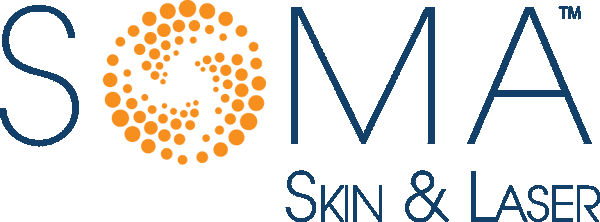Prurigo nodularis (PN) describes a skin condition with firm itchy nodules, in which the skin changes are thought to be secondary to the repetitive trauma of scratching. The lesions can be skin-colored, brown, or red, sometimes with scale, crust, or erosion and ulceration. Lesions of prurigo nodularis are typically on the extensor aspects of the arms and legs and the reachable areas of the shoulders and upper back. The central back is typically spared, since it cannot be reached to scratch. The sparing of the central back with involvement of surrounding reachable areas is termed the “butterfly sign”.
Prurigo nodularis often does not have an identifiable underlying cause, though many patients with the condition have underlying atopic dermatitis (eczema). In most cases, it is thought that the itch comes first and the resulting scratching causes the lesions. A search for underlying systemic illness that can cause pruritus should be undertaken. Depending on the circumstances this can include a complete blood count, comprehensive metabolic panel, iron studies, thyroid studies, IgE levels, and examination of stool for ova and parasites. Infectious disease such as hepatitis B or hepatitis C and HIV should be considered as well. Psychological factors may contribute to PN. Delusion of parasitosis and the controversial Morgellons disease are associated with chronic scratching and picking.
Although prurigo nodularis is often a straightforward diagnosis, sometimes a biopsy is necessary to rule out other possibilities such as hypertrophic lichen planus, pemhigoid nodularis or perforating disorders.
How is prurigo nodularis treated?
Prurigo nodularis is difficult to treat, and treatment failure is common. Topical, systemic, and intralesional steroids are often employed, with variable results. Applying superpotent corticosteroids under occlusion or the use of steroid impregnated tape is a strategy that both delivers steroid to the lesion and protects it from further scratching.
Other anti-itch creams can sometimes offer temporary relief. These include preparations containing capsaicin, menthol, pramoxine, vitamin D analogues, and topical anesthetics such as lidocaine. The calcineurin inhibitors pimecrolimus and tacrolimus are sometimes used as alternatives to topical steroids.
Phototherapy with psoralen plus ultraviolet (UV)–A (PUVA), broadband UV-B, narrowband UV-B, excimer laser (308 nm), and UV-A have all been reported to be successful.
Systemic medications other than steroids are sometimes used in the treatment of prurigo nodularis, much as they are used for chronic pruritus. These include antihistamines, anxiolytics, opiate receptor antagonists, and thalidomide or lenalidomide. Methotrexate has also been successfully used in the treatment of prurigo nodularis, as has gabapentin. Aprepitan is approved for the prevention of chemotherapy-induced nausea and vomiting and may benefit patients with prurigo nodularis through its ability to block the effects of Substance P, a mediator of pruritus.
Isolated lesions may occasionally be removed by shave excision, removing the temptation for the patient to continue picking. Cryotherapy and the pulsed dye laser have also been reported to be helpful in reducing pruritus.
